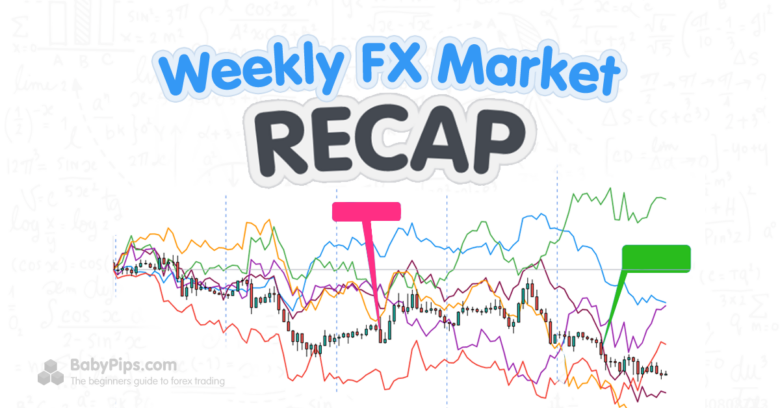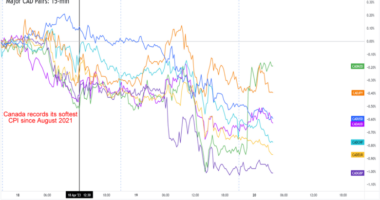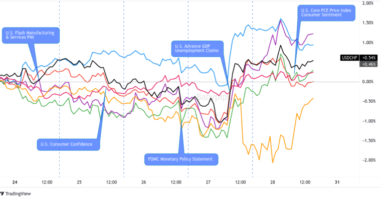
Banking sector woes were still the main theme early in the week before the spotlight shifted to the FOMC decision later on, along with other major central banks’ statements.
Efforts to shore up liquidity and restore confidence in the financial sector seemed to fall flat, though, as markets had varying views on how the latest plot twist would impact the global economic outlook.
Notable News & Economic Updates:
Chinese Foreign Ministry confirmed that President Xi visited Russia on March 20-22 for a state visit to discuss strategic cooperation
Russian President Putin praised Xi for his proposal to end the war in Ukraine, citing that it could be a basis for striking a deal with the West
Treasury Secretary Yellen assured that uninsured deposits might be covered if smaller institutions show signs of bank runs, but later clarified that the government is not looking into a “blanket” insurance for deposits
JPMorgan analysts estimate that some $1 trillion worth of deposits have already left the most vulnerable banks, following the collapse of SVB and Signature Bank two weeks ago
Coinbase gets “Wells notice” from SEC, which means that the regulator will bring enforcement action against the exchange, possibly related to institutional offering Coinbase Prime
Central bank updates:
- ECB Chairperson Lagarde clarified that, while price stability goes with financial stability, these are addressed by different policy tools
- ECB official Kazaks pointed out that their rate hike path could stay the course if market volatility calms down, but Stournaras noted that they might reach the end of their tightening cycle soon
- RBA Assistant Governor Kent spoke of slower cash flow rates in Australia but did not sound off concerns related to banking liquidity issues
- FOMC hiked interest rates by 0.25% to 5.00% as expected but warned that tighter credit conditions are in the cards for households and businesses
- SNB hiked interest rates from 1.00% to 1.50% as expected, with Chairperson Jordan citing that they could not rule out additional increases in rates to ensure price stability
- BOE increased interest rates by 0.25% in a 7-2 vote, although Governor Bailey hinted that the stronger than expected February CPI might be followed by a decline in price levels for the rest of the year
Intermarket Weekly Recap
News of Credit Suisse’s takeover by UBS greeted market players at the start of the trading week, putting risk assets on shaky footing as investors zoomed in on the AT1 bonds wipeout.
It didn’t help that the coordinated effort of major central banks (Fed, BOC, BOE, ECB, BOJ, and SNB) to increase the frequency of their swap operations in an attempt to shore up liquidity didn’t really generate much market interest.
The safe-haven yen managed to benefit from these risk-off flows while the U.S. dollar struggled to hold on to gains as traders priced in their FOMC expectations. U.S. bond yields failed to hold on to their early Asian session gains and wound up plunging to new lows not seen since September last year.
Another big beneficiary of banking contagion jitters was gold, as the precious metal busted through the key $2,000 level, lifting silver and bitcoin a.k.a. “digital gold” along with it.
A bit of calm was observed in the markets on Tuesday, with investors warming up to the idea of a scaled down Fed interest rate hike (from 0.50% to 0.25%) as the central bank would likely account for the fresh round of headwinds.
Global stock indices even managed to chalk up a decent rebound, as the Hang Seng index recovered by nearly 1% while S&P 500 futures rallied 2.2%, while gold lost some of its luster when the dollar pulled up.
Contributing to this slight boost in confidence were reassurances from U.K. and EU regulators that losses for Credit Suisse’s junior creditors would be minimized, along with Lagarde’s remarks that price stability tools remain separate from measures supporting financial stability.
Risk assets were able to extend their gains the following day, as Treasury Secretary Yellen mentioned that uninsured deposits might be covered if smaller lenders start showing signs of a deposit run as well.
While gold rounded up another day in the red, copper prices refused to back down and instead rallied for the fourth consecutive session to trade around $4 on signs of stronger demand from China.
As widely expected, the FOMC hiked interest rates by 0.25% during their announcement, with Powell warning that tighter credit conditions might be observed for households and businesses in the meantime.
Although the Fed refrained from making any other adjustments to its current policy stance and dot plot forecast, markets took the statement as generally dovish. The dollar index dipped 0.5% after the announcement and presser, dragged further south by Yellen’s clarification that the government is not considering a “blanket” insurance to backstop deposits.
Equities still managed to pull higher after an initial bearish FOMC reaction, as the likelihood of slower hikes and even the possibility of rate cuts could offer some relief down the line.
Meanwhile, hotter than expected U.K. CPI also took center stage, as the surprise pickup in headline inflation bolstered BOE tightening hopes ahead of their actual statement. The U.K. central bank increased borrowing costs by 4.00% to 4.25%, with policymakers voting 7-2 in favor of a hike and assuring that their banking sector maintains robust capital and strong liquidity.
However, Governor Bailey noted that the February inflation surprise might be a one-off since they expect price pressures to ease sharply over the rest of the year. Short-term gilt yields advanced after the official announcement before paring gains and ending 20bps lower on the day.
Most Notable FX Moves
USD Pairs
U.S. existing home sales improved from 4.00 million in January to 4.58 million in February, chalking up the strongest monthly rebound since COVID-19 lockdowns and ending its 12-month losing streak
U.S. initial jobless claims came in lower than expected at 191K versus 198K consensus and previous 192K figure
U.S. flash PMI
EUR Pairs
German ZEW economic sentiment index tumbled sharply from 28.1 to 13.0 vs. 14.9 consensus in March, as banking sector troubles weighed heavily on confidence
Eurozone ZEW economic sentiment index slipped from 29.7 to 10.0 vs. 16.0 forecast in March
Eurozone consumer confidence index stayed unchanged at -19 instead of improving to estimated -18 figure in March, leaving sentiment below its long-term average
German flash PMI
French flash PMI
GBP Pairs
U.K. headline CPI jumped from 10.1% to 10.4% year-over-year in February vs. estimated dip to 9.9% on higher prices of housing and household services, including electricity and gas
U.K. core CPI up from 5.8% to 6.2% year-over-year in February vs. estimated drop to 5.7%
U.K. PPI input prices fell by 0.1% month-over-month in February after earlier 0.4% uptick, PPI output prices tumbled 0.3% vs. estimated 0.1% increase
U.K. CBI industrial order expectations index fell from -16 to -20 in March vs. estimated improvement to -15, marking its third consecutive monthly disappointment
U.K. retail sales
AUD Pairs
RBA monetary policy meeting minutes sounded less hawkish, as central bank officials acknowledged that inflation remains too high but that warding off price pressures has been complicated
RBA policymakers also noted that employment growth has slowed and hiring intentions point to further moderation with job vacancies declining
CAD Pairs
Canada’s headline CPI dipped from 0.5% to 0.4% month-over-month in February vs. expectations of another 0.5% increase, bringing annual CPI down to 5.2%
Canadian median CPI dipped from 5.0% to 4.9% year-over-year vs. 4.8% estimate in February, as grocery prices remained elevated due to supply constraints and bad weather conditions









